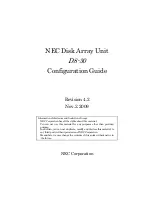
d. Return to the admin privilege level:
set -privilege admin
5. Give back the node:
a. From the healthy node, give back the replaced node’s storage:
storage failover giveback
-ofnode
replacement_node_name
The
replacement
node takes back its storage and completes booting.
If you are prompted to override the system ID due to a system ID mismatch, you should enter
y
.
If the giveback is vetoed, you can consider overriding the vetoes.
For more information, see the
b. After the giveback has been completed, confirm that the HA pair is healthy and that takeover is
possible: storage failover show
The output from the
storage failover show
command should not include the System ID changed
on partner message.
6. Verify that the disks were assigned correctly:
storage disk show -ownership
The disks belonging to the
replacement
node should show the new system ID. In the following example,
the disks owned by node1 now show the new system ID, 1873775277:
node1> storage disk show -ownership
Disk Aggregate Home Owner DR Home Home ID Owner ID DR Home ID
Reserver Pool
----- ------ ----- ------ -------- ------- ------- -------
--------- ---
1.0.0 aggr0_1 node1 node1 - 1873775277 1873775277 -
1873775277 Pool0
1.0.1 aggr0_1 node1 node1 1873775277 1873775277 -
1873775277 Pool0
.
.
.
7. If the system is in a MetroCluster configuration, monitor the status of the node:
metrocluster node
show
The MetroCluster configuration takes a few minutes after the replacement to return to a normal state, at
which time each node will show a configured state, with DR Mirroring enabled and a mode of normal. The
metrocluster node show -fields node-systemid
command output displays the old system ID
until the MetroCluster configuration returns to a normal state.
8. If the node is in a MetroCluster configuration, depending on the MetroCluster state, verify that the DR home
ID field shows the original owner of the disk if the original owner is a node on the disaster site.
750
















































